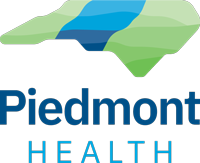The facilities operated by Piedmont Health are called community health centers, but you could call them pharmacies and you wouldn’t be wrong. All of Piedmont’s community health centers – with the exception of Sylvan, which serves a school-aged population – have pharmacies.
The reason is simple, according to Carl Taylor, Piedmont Health’s director of pharmacy services: “About 60 percent of our patients don’t have health insurance. If we don’t provide pharmacies for them, they probably won’t get their medication.”
Piedmont’s six pharmacies – which expect to fill 350,000 prescriptions in 2014 – are a critical link in the organization’s mission of providing high-quality, accessible and affordable medical care. To appreciate how they help carry out that mission, Taylor said, one must understand how Piedmont’s pharmacies differ from typical pharmacies.
If you spend time in any major pharmacy, Taylor said, you will hear patients negotiating with pharmacists – especially when getting multiple prescriptions filled: “When they hear the price, they will ask the pharmacist, ‘Which of these do I absolutely have to have?’ ”
At Piedmont Health’s pharmacies, by contrast, patients can get all of the prescribed medications, Taylor said. “We won’t deny anyone medication because they don’t have money,” he said. “If the prescription is $80 and they only have $30, they still get their medication.”
But nine out of 10 pay Piedmont’s full prescription price because the cost of the medication is so low in the first place, Taylor said. “The typical diabetic patient will spend $500 to $600 a month on medication,” he said. “Piedmont Health can do all of that for $100 a month. We have had patients in tears when we fill a prescription because it is the first time they have been able to get all of their medications at one time.”
Piedmont pharmacies keep their costs down by attacking high costs from several directions. One of the primary ways is through participation in the 340B program, a federal program that helps community health centers and other medical providers purchase medication at a lower price.
Costs are also kept low by carrying a higher percentage of lower-cost generic drugs than typical pharmacies and by using a formulary system to determine what medications to keep in stock, Taylor said. “We don’t have 10 different brand names of something, but we have everything we need for a patient,” he said.
“If all pharmacies operated like we did,” Taylor added, “drug prices would dramatically drop.”
Piedmont’s pharmaceutical staff (14 full-time and eight part-time pharmacists and 20 techs) also try to make sure patients take the medications properly. Two prime barriers to taking medication are confusion and lack of transportation, Taylor said; Piedmont’s pharmacies all have sit-down consultation areas where pharmacists discuss medication with patients, Taylor explained. For patients in Piedmont Health SeniorCare, a program serving an elderly population, the organization bubble wraps medication in packets that help them keep track of which medication to take when.
To make sure patients get their medication, Piedmont’s pharmacies put prescriptions in the mail – something typical pharmacies will not do, Taylor said.
Taylor emphasizes that Piedmont’s discount pharmacy prices do not mean lower quality. He notes, for instance, that he is a national consultant for the federal 340B program, and that some University of North Carolina School of Pharmacy students get part of their training at Piedmont.
Piedmont’s pharmacies have a different approach from the typical pharmacy, Taylor said. He said he makes sure that Piedmont pharmacists understand the approach when they come on board: “We are a nonprofit so we’re not profit-driven,” he said. “Piedmont Health is a federally qualified health center – its mission is to take care of people, and many times they cannot pay but we still take care of them. That carries over into pharmacies.”
